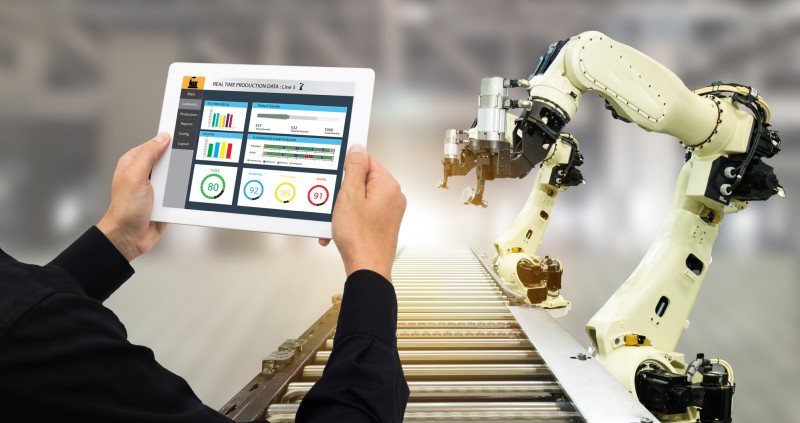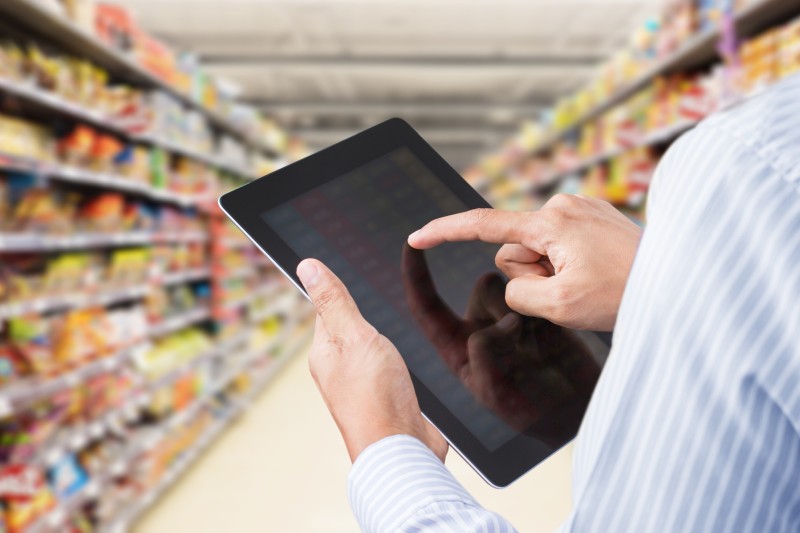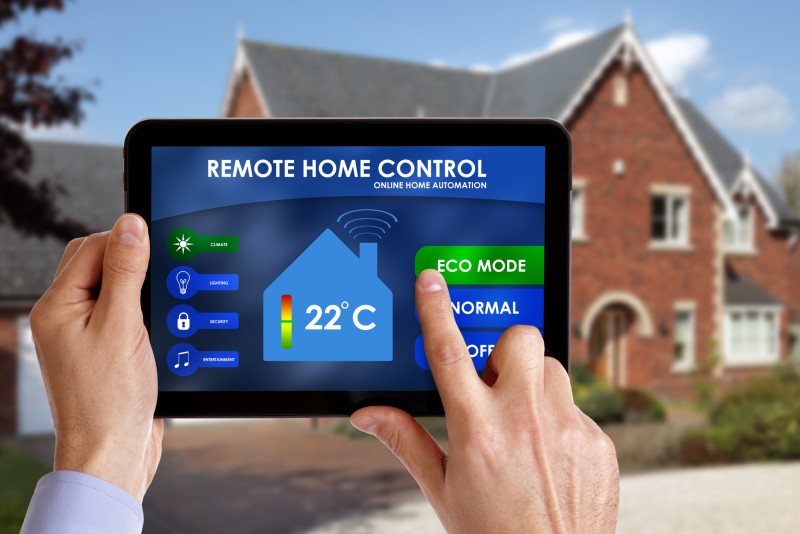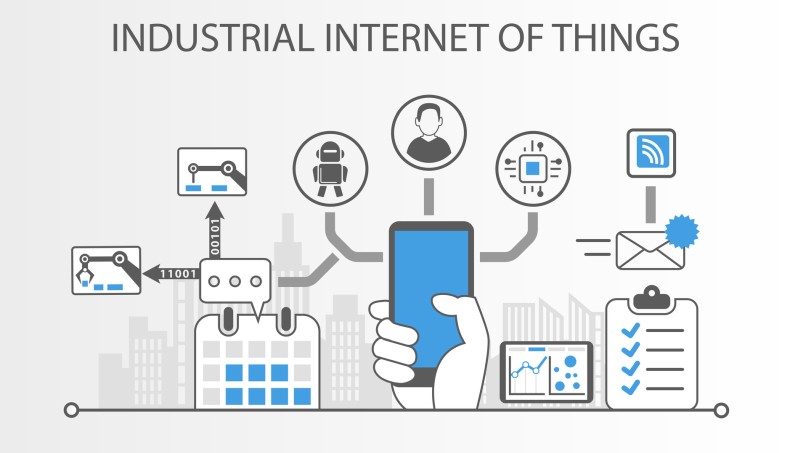These days, there are millions and millions of devices connected to the internet that transfer data without any human intervention at all.

The International Data Corporation (IDC) reported that by 2025 there will be around 41.6 billion of connected IoT devices which will be generating an estimate of 79.4 zettabytes (ZB) of data!!
From smart light bulbs to refrigerators, just about anything can be connected to the internet persistently.
Much of this is due to the fact that efficient wireless technology suitable for IoT (such as Zigbee, Zwave etc) has seen great advancements and also the device chips needed to enable and maintain a good connection are small and inexpensive to produce.
What Are Some Benefits of the Internet of Things?
The Internet of Things is here to stay. In fact, it’s not just a gimmick, because it can be so incredibly useful.
You might wonder why your refrigerator can connect to the internet, but there are more benefits than most people can imagine. Some of the main advantages of IoT are discussed below.
-
Automation and Control
Perhaps one of the simplest examples of automation and control via an IoT smart device is the humble light bulb. So-called smart bulbs that can connect to the home network have really exploded in popularity. They provide people with the ability to control when lights are turned on and off, as well as other functions.
It’s not just smart lighting though. You can have internet-connected devices anywhere in the home. Voice control through Google or Amazon devices can easily integrate with TVs and other devices on the network so that you can automate their schedules or turn them on and off with a simple command.

In industrial applications, IoT devices can control manufacturing lines, robots etc with automated remote control of the machines in the factory.
-
Access Information in Real-Time
Perhaps the primary benefit of internet-connected devices is that they provide up to the second information.
Imagine a scenario where products throughout a large warehouse are all connected to the local network. These persistent connections provide information such as product movement logged in with time and date, and data on when new stock needs to be ordered and in what quantities.
Consider also the opportunities for internet-connected devices in a setting where real-time monitoring is critical. Sensors that measure temperature, for example, can feed back into a system that controls and automates commercial and industrial refrigeration.
-
New Business Opportunities
The very idea of IoT presents businesses with a multitude of new opportunities. Though smart devices are penetrating various layers of society, widespread use and acceptance is not quite there yet.
Imagine a business that focused solely on creating and installing internet-connected devices into cars and other vehicles. Or a start-up business that creates wearables for people with specific health conditions, such as diabetes or high blood pressure.
-
Improve Monitoring with Sensors
For businesses, the Internet of Things provides fantastic opportunities for growth and data collection. When deployed across a network of objects, the collected data can inform business decisions at a truly granular level.
For example, internet-connected tags on supermarket products can provide real-time information about purchasing trends across the typical day.

This feeds into much better inventory control, and also provides excellent insight into buying patterns. It can even be linked directly to individual customer transactions at the checkout and cross-referenced with zip code data that is also collected.
Another example is security monitoring using motion or impact sensors or security cameras. These can be classified as IoT devices which work continuously to provide security to our properties.
-
Machine-to-Machine Communication
By definition, the Internet of Things operates without human intervention. Data is collected and logged in real-time regardless of whether we collect it or not. The real impact of this is that services can be made much more efficient.
This machine-to-machine communication effectively creates an efficiency of data collection that obviates the need for staff members to do the same job. In fact, it makes the job of operating staff easier because they can focus on the data rather than the collection of it.
A typical scenario of machine-to-machine is the tracking of mileage and routes in cars. For example, a company that own a fleet of cars with employees using them for business operations can track the usage and mileage of each car using IoT devices installed in each car.
These devices send real-time data back to a server for monitoring and tracking purposes.
-
Better Quality of Life
There are many instances where the convergence of big data and IoT can create better outcomes for people. Those who focus solely on businesses don’t see the whole picture and what IoT can truly provide.
For example, the use of smart devices in medicine can literally save lives. Smart blood pressure monitors that send back information in real-time, or smart pills that can be ingested and send back data as they move through the gastrointestinal tract are both great examples of how networked devices can truly benefit people.
The use of smart devices can be applied on a city-wide scale too. Internet connected traffic lights and traffic sensors can feed back the data. This results in predictive outcomes that can adapt to traffic flows at any time.
The use of smart devices in cars and other vehicles can connect wirelessly to toll gates, traffic lights ahead, and road safety monitors to provide real-time feedback to drivers and authorities on traffic conditions and the risk of accidents.
-
Cost Reduction
Cost reductions are widespread when devices are connected and networked. This machine-to-machine mesh of data not only provides real-time data and opportunities for analysis, but also enables much greater improvements in efficiency across the board.
This is not just restricted to smart inventory technologies, but also development cost reductions and a lowering of the cost of materials. As sensors and internet connectivity is rolled out, businesses become smarter.
For example, information about worker movement and motion, pollution levels, and temperature provide cost lowering benefits. Sensors in lights turn on only at times when people are moving through areas, thus saving on utility costs.

Ambient temperature sensors are linked to automated heating and cooling systems that require no human intervention and provide fully climate-controlled environments that save money.
-
Increased Efficiency and Productivity of Businesses
Just as Google and Amazon voice-activated products can increase efficiency at home, the IoT can also improve business and industrial productivity and efficiency.

For example, improved data collection through a network of internet-connected devices can provide incredibly detailed information that can be analyzed and used by the business to improve customer service or business processes.
For example, energy companies will often estimate a utility bill if they cannot access a property. But if the electrical box is connected directly to the utility company via the internet, no customer ever needs to worry about such a bill again.
-
Predictive Analysis Thanks to the Collection of Big Data
Big data has been a buzzword for some years now and was certainly popular before IoT took off. Internet-connected devices exist to gather data, whether it is tracking inventory or customer activity. All of this data feeds back into the system and improves efficiencies.
Big data is analyzed to generate new opportunities and predict everything from customer behavior to stock control. As we roll out smart devices into homes and schools, more data is gathered and more predictive techniques can be applied to improve our lives.
-
Remote Health Monitoring
Medical advances have ensured that more people are living into old age, but technology is helping to push these boundaries even further. In a world where communication is key, and where early detection is important, IoT devices can be incredibly useful.
Imagine a health bracelet with an embedded monitoring system that can keep an eye on blood sugar levels, for example. This internet-connected diabetic bracelet can log blood sugar levels and send notifications directly to other family members and even medical personnel.
For those with chronic illnesses who need to be monitored remotely by health professionals, a discrete internet-connected device provides real time data that can be analyzed.
What are Some Benefits of IoT in Education?
Automated Classroom Attendance Recording
The onslaught of emergent Internet of Things (IoT) technologies has allowed educators to either reduce or eliminate entirely the manual processes associated with calculating attendance hours for students.
Internet of Things-based systems, such as those that rely upon RFID tracking devices and fingerprint-based systems, can store attendance data in one easy-to-access centralized database.
This technology utilizes NodeMCUV3, RFID chips, and fingerprint sensor modules to document and record student attendance.
Fingerprint modules automatically track and authenticate students for attendance purposes. RFID modules are deployed by scanning RFID tags ascribed to present students before sending verified data to a centralized server. This information can automatically generate attendance reports to be verified against mandatory course requirements.
School Security and Safety Monitoring Solutions
US universities and colleges are increasingly turning to Internet of Things (IoT) technology solutions to bolster student, faculty, and staff security on their campuses.
While many of these institutions already rely upon IoT devices to optimize their facilities’ energy consumption and enhance classroom instruction, there is a growing dependence on them for campus safety.
Building alarms, smart door locks, and video surveillance in public spaces account for only a few IoT solutions college campuses utilize to keep their visitors secure.
Many of these IoT technologies incorporate sensors to detect human presence in a given area, such as activity in a parking lot. Others are ostensibly more sophisticated, alerting administrators and security staff of a potential emergency before it escalates.
These sensor-based systems can also detect poor indoor air quality along with the presence of toxic or illicit substances. The smart sensors alone are highly advanced innovations. Yet, they can’t be enabled without common IoT-based devices that offer all-in-one solutions to keep campuses secure.
Improving Energy Efficiency in Schools
For decades, school administrators and custodial managers have sought new ways to reduce energy costs at their facilities. An impactful approach to cutting energy expenses, one that balances practicality with a dependable return on investment (ROI), has proven elusive over time.
Internet of Things (IoT) technologies, however, introduce a new realm of possibilities for reducing energy consumption at schools and college campuses around the globe. For most school buildings, the whole of the power bill goes toward interior lighting and keeping the climate comfortable.
IoT devices have introduced new ways of regulating school facility lights and controlling indoor climate without requiring new and expensive hardware upgrades. IoT LED lights, for instance, now respond to remote prompts from a simple smartphone app to control lights individually or in sets. Likewise, these same apps regulate climate settings, as well, for considerable energy savings.
Empowering Disabled Students
While IoT technology in high education is still in its infancy, new studies reveal that it benefits students with disabilities just as much as advanced learners. Smartphones and other consumer-based IoT devices are proven to produce increased levels of engagement among the learning disabled to improve classroom learning environments.
Ease of access is another contributing factor since a vast majority of students can encounter learning materials from devices they already own. Despite the many challenges posed by the privacy and security of IoT devices, most professional educators remain optimistic about the future of IoT technology and disabled learning initiatives.
What are Some Benefits of IoT in Agriculture and Farming?
IoT Based Data Collection
The Internet of Things plays a vital role in precision agriculture, particularly when it comes to data collection. For an industry that’s expected to feed more than 9 billion people before the year 2050, sustainable IoT solutions for agriculture couldn’t be more vital.
Precision agriculture, a type of farming that relies upon technology to increase efficiency and reduce production costs, heavily leverages IoT devices for its data collection processes. IoT devices use field sensors to gauge critical data, such as soil moisture and nutrition. Likewise, IoT devices gather thermal and spectral imaging to monitor overall crop health and growth.
The use of IoT technology and field sensors optimize agricultural inputs by reducing water and fertilizer requirements. In addition to this, IoT technology aids farmers in capturing and eliminating field pests.
Real-Time Livestock Monitoring with IoT Devices
Precision livestock management significantly benefits from IoT technology and its capacity to provide real-time feedback on the activity and health of cattle. While traditional livestock monitoring entailed individual inspection of monitoring, the now outmoded approach often proved costly and less than reliable.
IoT-enabled livestock solutions remove speculation from heard health and location. Sensor-powered collars and tags let ranchers know the temperature, heart rate, blood pressure, and precise location of their cattle at all times. This data is transmitted wirelessly to an app-controlled IoT device by which farmers monitor the information in real-time.
How Agricultural Drones Are Revolutionizing Precision Agriculture
Crop surveillance and data collection increasingly depend on drones for optimally efficient farming practices. Precision agriculture, also known as precision farming, aims to reduce water and fertilizer consumption while maximizing crop and livestock yield.
To maintain healthy livestock and crops, farmers must continually monitor their agricultural operations. Drones allow them to achieve this by air, where they can identify problems that would not be readily apparent through routine spot-checks on the ground. Drone applications for farming are numerous and diverse, ranging from crop dusting and spraying to mapping and surveying.
IoT Technology Marks a New Era for Clean Agriculture
Analysts expect the agricultural sector to continue growing at a rate of 3% annually over the next several years. This prediction is influenced by population current growth trends. A larger population coupled with an increase in global living standards means that farmers must adapt to meet growing demands by using natural resources more efficiently and sustainably.
The adoption of IoT technology in agriculture will be a game-changer in the years to come. The market for smart and precision farming is anticipated to exceed 23.14 billion USD by the end of 2022, with roughly 75 million IoT devices implemented for agricultural purposes in the upcoming years.
Automated agricultural vehicles like drones and autonomous robots along with advanced sensor-based solutions will undoubtedly play significant roles in advancing sustainable agricultural practices over the next few decades.
Conclusion
The Internet of Things is growing all around us whether we realize it or not. It’s clear that businesses can take advantage of the many opportunities provided by it, but the real challenge will be in how we take advantage of it to improve our lives.
Leave a Reply